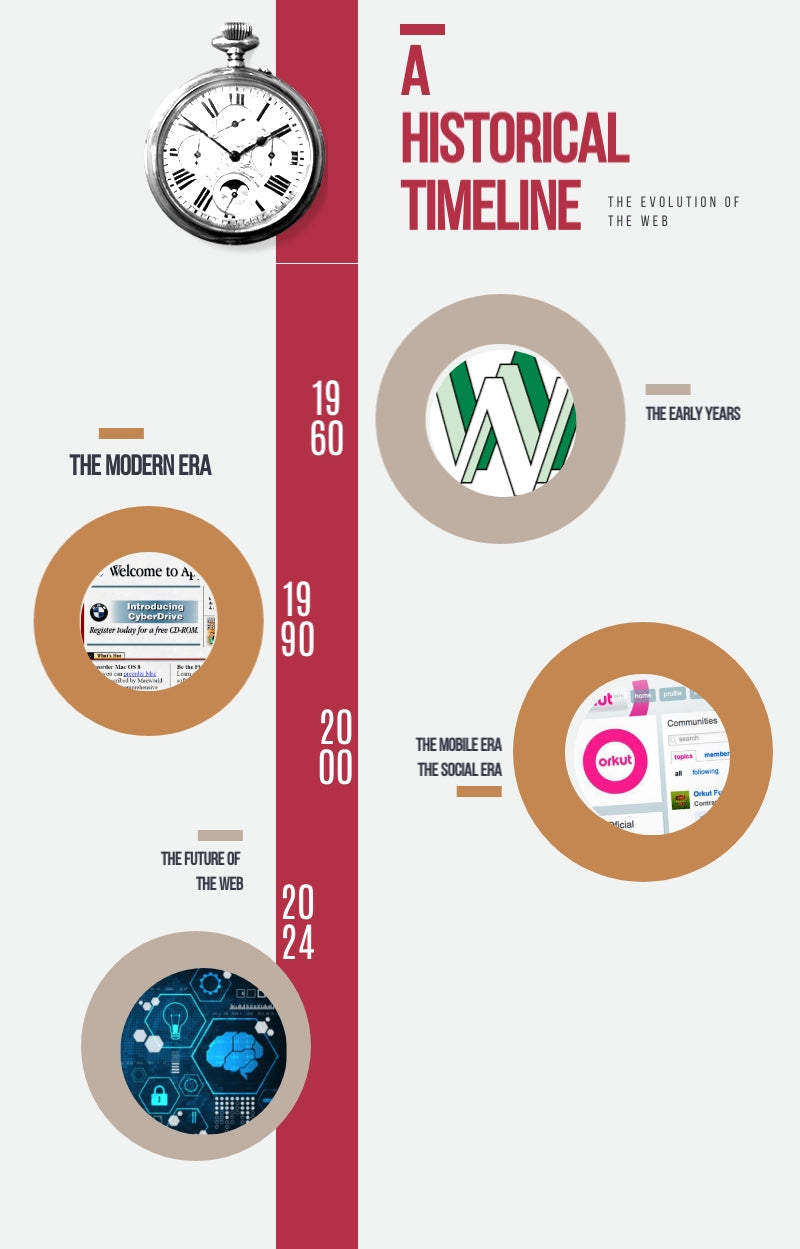
The evolution of the web
SUKH SANDHUThe evolution of the web
The web has come a long way in its relatively short history. In the early days, the web was little more than a series of static pages that were difficult to navigate. But as the web evolved, so too did the way we use it. Today, the web is a dynamic and powerful tool that allows us to do everything from online shopping to communicating with friends and family. Here's a look at how the web has evolved over the years:
The Early Years:
The origins of the World Wide Web can be traced back to the early days of packet-switched (first invented by Paul Baran in the early 1960's and then independently a few years later by Donald Davies) computer networking in the 1960s. These early networks were designed for sharing data between scientists and researchers, and they were not intended for public use. However, as the technology developed, it became clear that these networks could be used to connect people all over the world.
In the late 1980s, Tim Berners-Lee, a British computer scientist working at CERN (the European Organisation for Nuclear Research), started developing a system that would allow people to share information electronically. His system, which he called the World Wide Web, was based on two key technologies: hypertext and the Internet.
Hypertext is a system of linking text documents so that readers can easily navigate between them. The Internet is a global network of computers that allows different types of electronic devices to communicate with each other.
Berners-Lee's vision was to create a system that would allow anyone, anywhere in the world, to access information quickly and easily. In order to make his vision a reality, he developed a set of standards that would ensure that all web pages could be viewed regardless of the device or software being used.
On August 6, 1991, the first web page was created. http://info.cern.ch/hypertext/WWW/TheProject.html was the address of the first web page.
The first web browser - or browser-editor rather - was called WorldWideWeb as, after all, when it was written in 1990 it was the only way to see the web. This allowed users to view websites in a graphical format, making the web more user-friendly.
Since then, the web has undergone many changes and evolutionary steps. Today, there are over 1 billion websites online, and the number is growing every day.
The early years of the web were a time of great experimentation. Many different technologies were developed, and it was not always clear how they would be used. However, through trial and error, the web has become what it is today: a powerful tool for communication and collaboration that is used by billions of people around the world.
The Modern Era:
The late 1990s saw the rise of the modern web as we know it today. This was due in part to the release of Microsoft's Internet Explorer and Netscape's Navigator browsers, which made browsing the web easier and more enjoyable. It was also during this time that many of the features we take for granted today were introduced, such as images, streaming videos, and interactive content.
The Mobile Era:
The early 2000s saw the rise of the mobile web as cell phones and other mobile devices became more popular. This led to the development of mobile-friendly websites and apps that made it easier to access the web on the go.
The Social Era:
The late 2000s and early 2010s were dominated by social media sites like Facebook, Twitter, and LinkedIn. These sites changed the way we use the web by making it easy to share information and connect with friends and colleagues.
The Future:
The future of the web is impossible to predict, but one thing is certain: it will continue to evolve. As new technologies emerge, we can expect the web to continue to change and grow in unexpected ways. Who knows what the next big thing will be? Only time will tell.
RECENT POSTS





